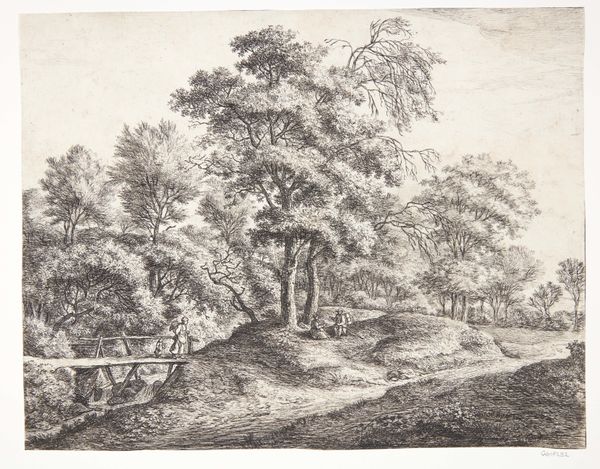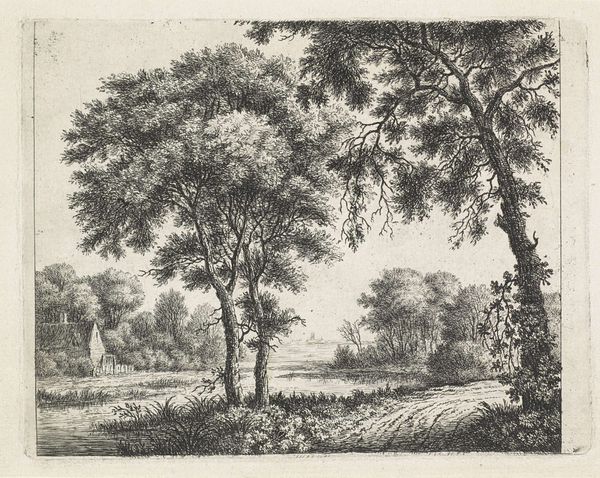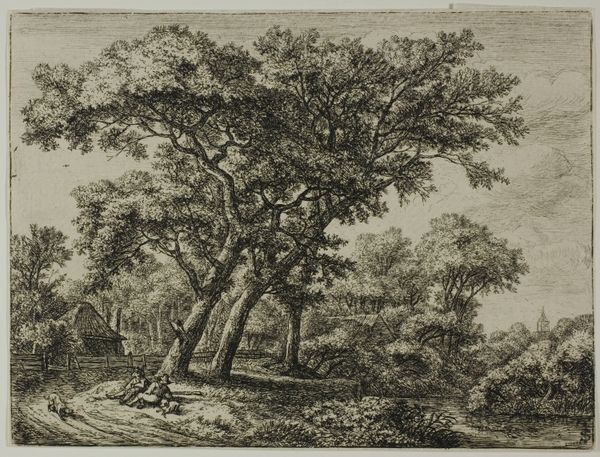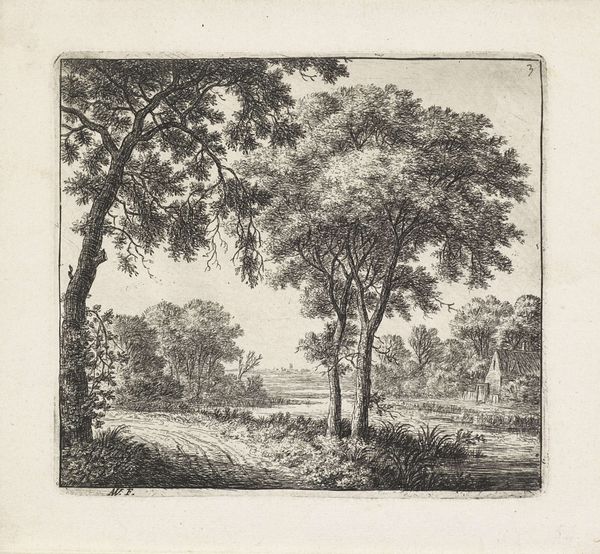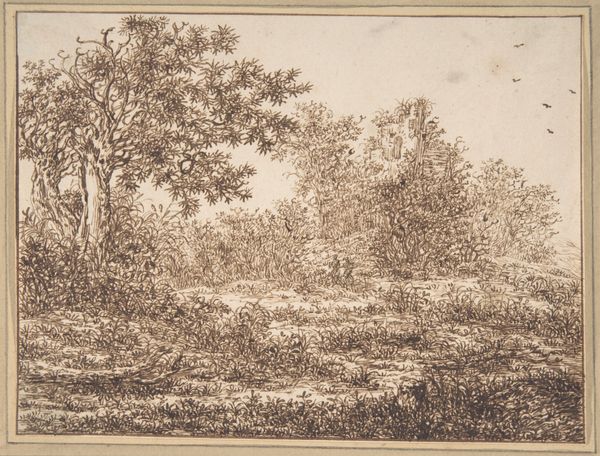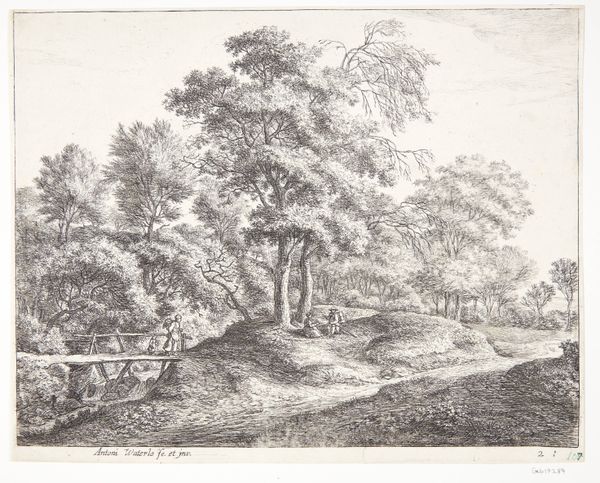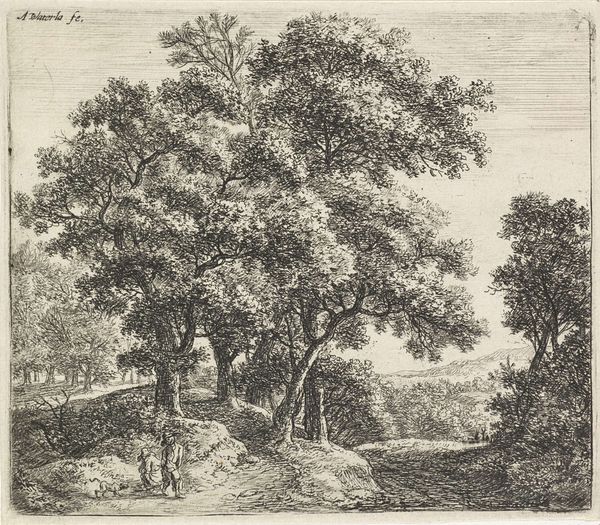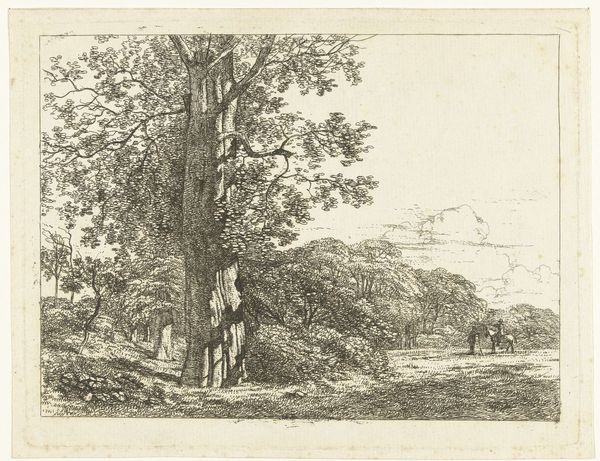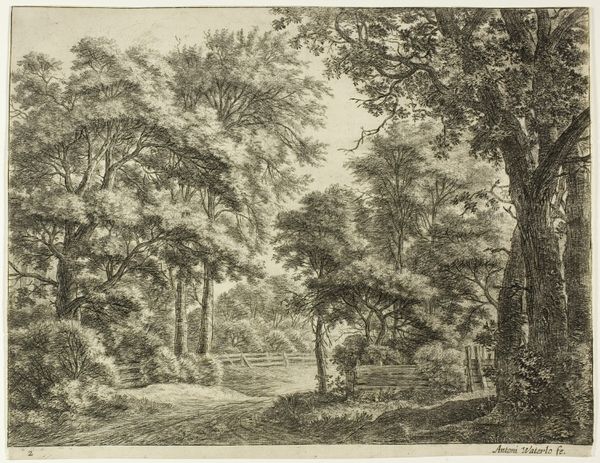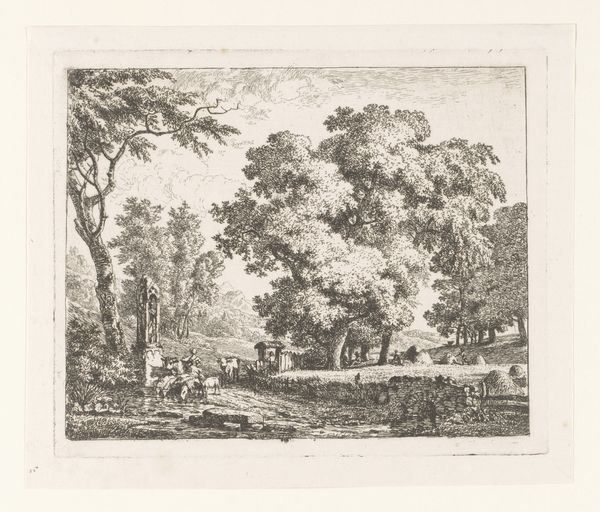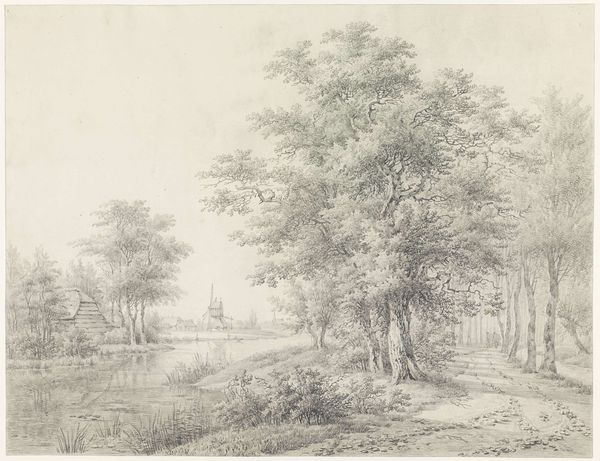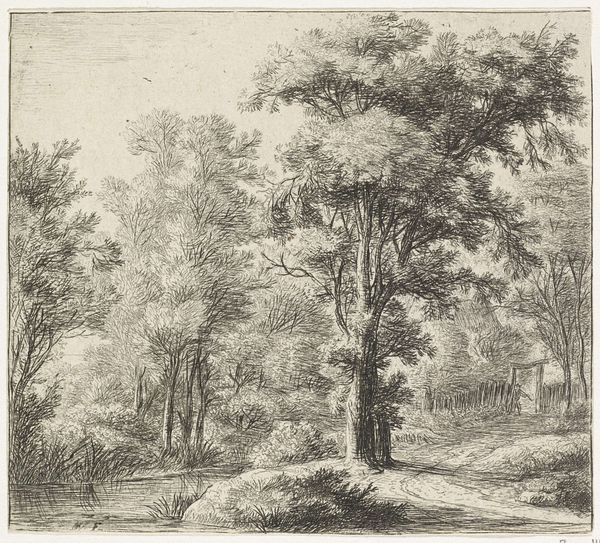
drawing, print, etching
#
drawing
#
dutch-golden-age
# print
#
pen sketch
#
etching
#
landscape
Dimensions: 121 mm (height) x 138 mm (width) (plademaal)
Anthonie Waterloo’s ‘House on a Riverside’, was likely made in the mid-17th century, using etching. This intaglio printmaking technique involves using acid to cut into a metal plate, in this case copper, to create an image. Waterloo would have coated the plate with a waxy, acid-resistant substance, then scratched through it with a needle, exposing the metal. Immersing the plate in acid would then bite into the exposed lines, creating recessed areas that would hold ink. The resulting print shows the marks of this process – the fine, precise lines, capturing the textures of bark, leaves, and the rough walls of the house. Etching allowed Waterloo to create multiple copies of his composition, making art more accessible. The relatively small scale of the work suggests that it would have been collected in albums, a popular form of art consumption at the time. In this way, the artwork demonstrates that printmaking democratized artmaking and collecting, thereby challenging the traditional hierarchies of artistic production.
Comments
No comments
Be the first to comment and join the conversation on the ultimate creative platform.

